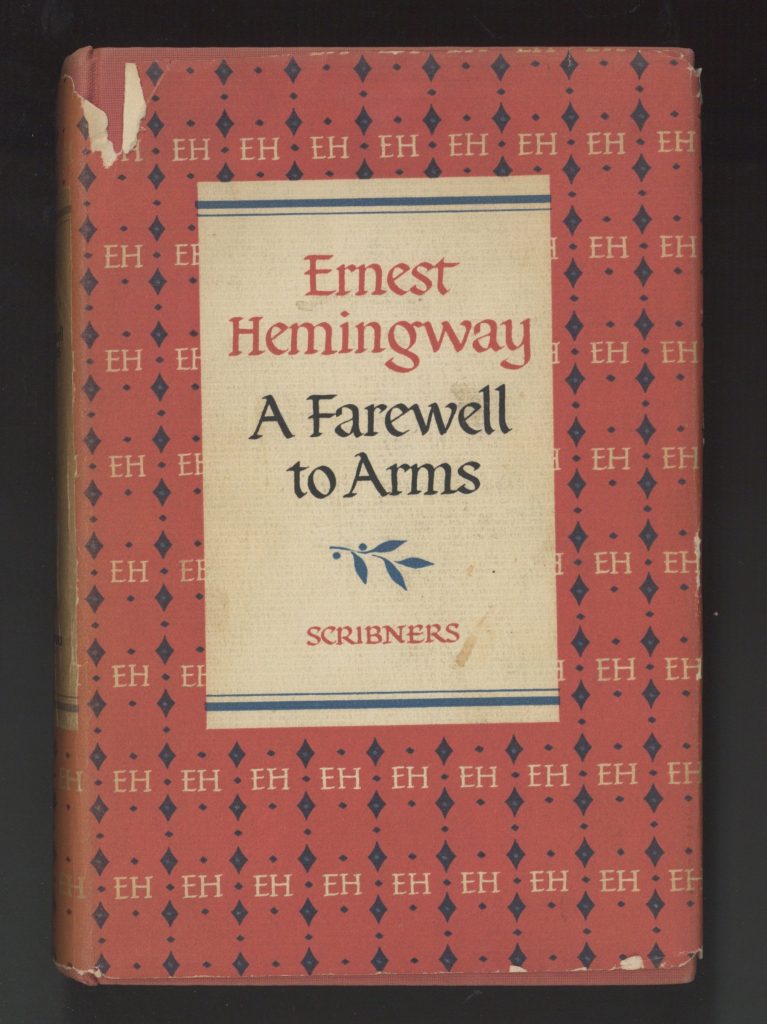A Copy of “A Farewell to Arms”, the Classic Novel of Love During Wartime, Signed by Ernest Hemingway for a Young Woman Friend Whom He Compared to Marlene Dietrich




She had traveled to Cuba, decided to call him, elicited an invitation to his home, and entertained guests with him over a few days
Written when Ernest Hemingway was thirty years old and lauded as the best American novel to emerge from World War I, “A Farewell to Arms” is the unforgettable story of an American ambulance driver on the Italian front and his passion for a beautiful English nurse. Set against the looming horrors of...
Written when Ernest Hemingway was thirty years old and lauded as the best American novel to emerge from World War I, “A Farewell to Arms” is the unforgettable story of an American ambulance driver on the Italian front and his passion for a beautiful English nurse. Set against the looming horrors of the battlefield, this gripping, semi-autobiographical work captures the harsh realities of war and the pain of lovers caught in its inexorable sweep. Hemingway famously rewrote the ending to “A Farewell to Arms” thirty-nine times to get the words right.
Mary Lou Firle, a second year student at CCNY, was in Cuba in early 1955. Before she left she bet her future husband that she would have Ernest Hemingway sign the book she had, “A Farewell to Arms.” In Cuba, she picked up the phone and called Ernest Hemingway. When he answered she introduced herself and added, “I have a friend at Fordham University.” Hemingway immediately assumed the friend was Prof. Bob Brown who had been in touch with Hemingway on several occasions. Brown was writing a book or articles about Hemingway. Hemingway told Mary Lou that his wife Mary was away and he had to entertain visitors from the French Embassy that afternoon. He asked her if she would come to his home and help him. Mary Lou agreed and Hemingway sent his driver to pick her up.
After the meeting the group drove her back to Havana. Hemingway invited her back the next day for lunch and sent his driver to pick her up. They spent the afternoon talking. She had told him of her family background, that her parents were born in Germany. Since she had been at Veradero Beach for a week she had a deep tan, and Hemingway called her the “Black Kraut.” The reason for the nickname, Hemingway said, was that he called his good friend, Marlene Dietrich, the famous German actress, “Kraut”; so Mary Lou, who was very tan, would be the “Black Kraut.” Later that day Hemingway’s driver drove her back to Havana. The two exchanged letters in July and October 1955.
Mary Lou’s copy of “A Farewell to Arms”, publisher Scribner’s, 1953 publication date, inscribed and signed “To Mary Lou Firle, with all best wishes, and much affection from her friend, Ernest Hemingway. Finca Vigia, San Francisco de Paula, 3 February 1955.”
This book has been in Mary Lou’s family’s possession since it was received, and we acquired it direct from them. Mary Lou had promised Hemingway that she would not sell the book during her lifetime and kept her promise. She told her family it would be ok to sell it after she passed.

Frame, Display, Preserve
Each frame is custom constructed, using only proper museum archival materials. This includes:The finest frames, tailored to match the document you have chosen. These can period style, antiqued, gilded, wood, etc. Fabric mats, including silk and satin, as well as museum mat board with hand painted bevels. Attachment of the document to the matting to ensure its protection. This "hinging" is done according to archival standards. Protective "glass," or Tru Vue Optium Acrylic glazing, which is shatter resistant, 99% UV protective, and anti-reflective. You benefit from our decades of experience in designing and creating beautiful, compelling, and protective framed historical documents.
Learn more about our Framing Services














































































































